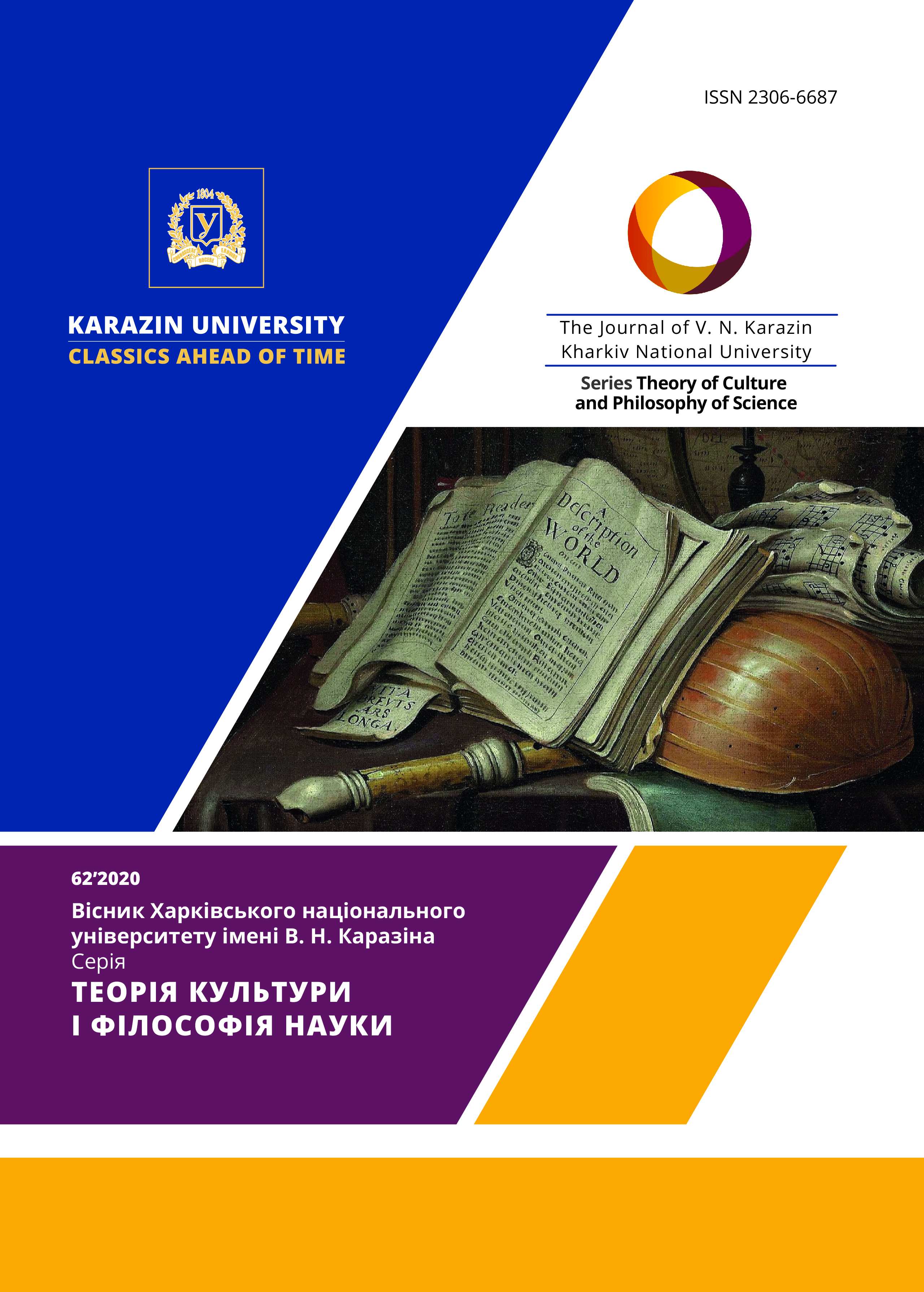CONTEMPORARY UKRAINIAN LAUGHTER CULTURE: TRADITIONS AND INNOVATIONS
Abstract
Nowadays Ukrainian laughter culture acquired principally new characteristics. We witness the outbreak of Ukrainian laughter which is reflected not only in the popularity of entertainment business but also in the influence of laughter culture at the potestary relations. This increases the relevance of discussions about the national authenticity of specific laughter practices. We think that these phenomena and problems deserve a thorough research. That is why the aim of this article is to reveal the semantics of contemporary Ukrainian culture by specifying its invariant elements and singling out the newest discourses. They are studied in the aspect of interaction between potestary and laughter practices.
The research is based on some concepts of H. Bergson’s laughter theory and M. Bakhtin’s methodology of analysis of laughter culture, supplemented with the ideas of the contemporary culturological discourse about specific traits of Ukrainian laughter culture.
Scientific novelty. The scientific novelty of the work is in the fact that for the first time the invariant practices, peculiar to Ukrainian laughter are singled out in it; the features of its development in modern conditions are analyzed; the criteria of defining truly Ukrainian opposition of laughter culture to ideology are defined. Such contemporary laughter practices as “prikol” are given new interpretations.
The phenomenon of Ukrainian laughter is a dynamic cultural fact which combines traditional and innovative practices. In the contemporary cultural space (as opposed to the previous epoch of laughter culture), there exist various laughter discourses, which differ in general cultural level, intellect, and political orientation of the laughter subjects. Based on these two discourses, the interaction of carnivalized politics and politicized laughter culture occur. On the one hand, it testifies to the processes of democratization of the society, but on the other hand it paradoxally, with the help of laughter practices, reflects the depressive condition of social consciousness.
Downloads
References
Barabash, Yu. Lessons in Ethnography. Returning to the old disputes. N.V. Gogol and the folk culture. VII Gogol’s readings. Retrived from: http://domgogolya.ru/science/researches/1370// (in Russian).
Bakhtin, M. (1990). Works of François Rabelais and the Medieval and Renaissance folk culture. M.: Hud. lit. (in Russian).
Bergson, H. An Introduction to metaphysics. Laughter. Retrived from: http://krotov.info/library/02_b/er/gson_smeh.htm (in Russian).
Garachkovska, O. (2015) ХХ ct. in Ukrainian poetry through the prism of laughter. Kyiv, Alpha-M. (in Ukrainian).
Zhulinskiy, M. The two halves of Ukrainian heart: Shevchenko and Gogol. Retrived from: https://day.kyiv.ua/uk/article/istoriya-i-ya/dvi-polovinki-ukrayinskogo-sercya-shevchenko-i-gogol. (in Ukrainian).
Kagan, М. (2002). The introductory report “Anecdote as a cultural phenomenon”. Anecdote as a cultural phenomenon: the materials of the round table. St-Petersburgh, November 16. Retrived from: http://anthropology.ru/ru/texts/kagan/anecdote_01.html. (in Russian).
Kosyuk, О.М. (2005). The laughter and travesty tele-relaxation in the context of the folk laughter culture. The Herald of L’viv national university. Series: Journalism. L'viv, Svit. V. 26, 84–92. Retrived from: http://old.journ.lnu.edu.ua/publications/visnyk26/Statti_Kosjuk.htm. (in Ukrainian).
Krasnokutsky, G. (2011). The negative Risus-factor: archetypes of the laughter culture against the ridiculousness of the lack of culture in Ukrainian politics in the first decade of the XXI ct. Δόξα: a journal in philosophy and philology. Odesa. V. 16, 175–180. Retrived from: http://doxa.onu.edu.ua/Doxa16/175-180.pdf (in Ukrainian).
Malakhov, V. (2003). “The prikol phenomenon”. Δόξα: a journal in philosophy and philology. Odesa. V. 3. Gnoseologic and anthropologic dimensions of laughter, 179-186. Retrived from: http://doxa.onu.edu.ua/Doxa3/116-120.pdf. (in Russian).
People's Poland, communism and socialism. Similar jokes and jests. Retrived from: http://prl.dowcipy.pl. (in Polish).
Stolyar, M. (2013) Laughter culture of totalitarian society: essence, forms, and action mechanisms (on the example of the Soviet cultural practices): The abstract of the thesis for the degree of Doctor in Philosophy. Kharkiv (in Ukrainian).
Stoliar, M. (2011). The Soviet laughter culture: Monograph. Kyiv, Stylus. (in Russian).




